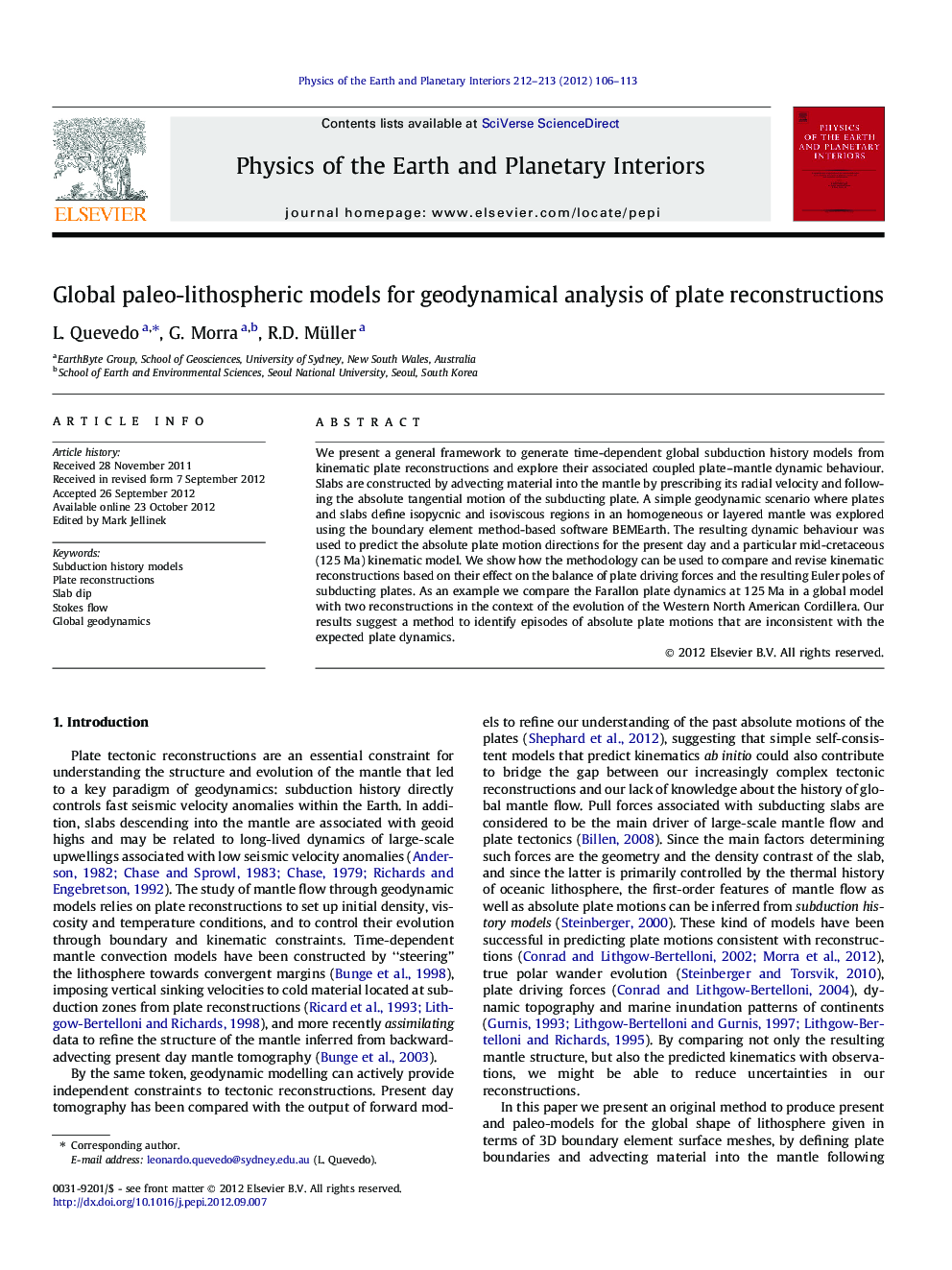| Article ID | Journal | Published Year | Pages | File Type |
|---|---|---|---|---|
| 4741738 | Physics of the Earth and Planetary Interiors | 2012 | 8 Pages |
We present a general framework to generate time-dependent global subduction history models from kinematic plate reconstructions and explore their associated coupled plate–mantle dynamic behaviour. Slabs are constructed by advecting material into the mantle by prescribing its radial velocity and following the absolute tangential motion of the subducting plate. A simple geodynamic scenario where plates and slabs define isopycnic and isoviscous regions in an homogeneous or layered mantle was explored using the boundary element method-based software BEMEarth. The resulting dynamic behaviour was used to predict the absolute plate motion directions for the present day and a particular mid-cretaceous (125 Ma) kinematic model. We show how the methodology can be used to compare and revise kinematic reconstructions based on their effect on the balance of plate driving forces and the resulting Euler poles of subducting plates. As an example we compare the Farallon plate dynamics at 125 Ma in a global model with two reconstructions in the context of the evolution of the Western North American Cordillera. Our results suggest a method to identify episodes of absolute plate motions that are inconsistent with the expected plate dynamics.
► We develop a framework to generate time-dependent global subduction history models. ► Global convection simulations based on model input used to predict plate velocity. ► Effect of mantle layering in plate velocity fitting is explored. ► Simulated mid-cretaceous motions fit observations better than reconstructed ones. ► Methodology to constrain absolute plate motions is proposed.
